Installing floodlights in your home can be an excellent investment in your property’s security. Floodlights are outdoor lighting fixtures that give your yard a bright and broad illumination. Traditionally, installing floodlights can be a challenging task, especially if you don’t have existing wiring.
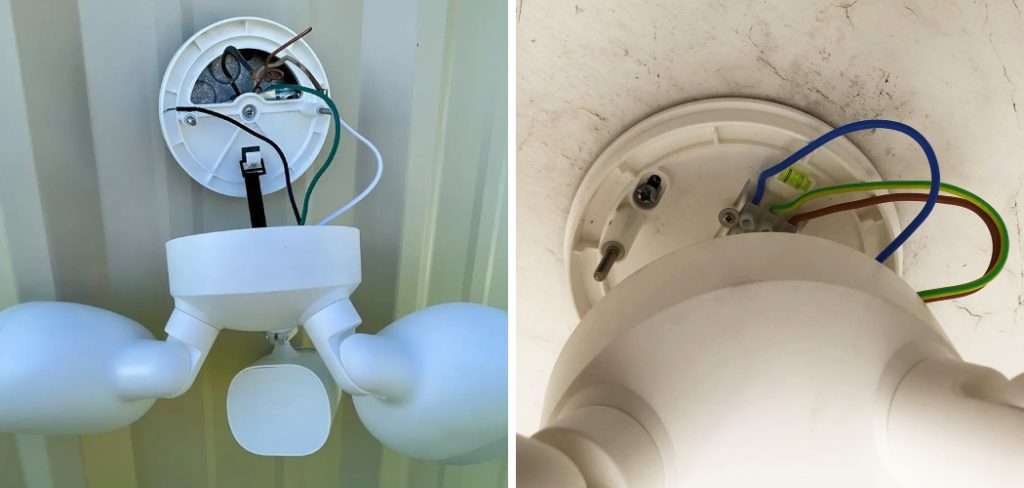
Fortunately, technology has provided solutions for homeowners, making it possible to install floodlights without existing wiring. Installing floodlights without existing wiring is an inexpensive way to improve your home’s security. In this blog post, we’ll discuss how to install floodlight without existing wiring.
Can You Install Floodlight without Existing Wiring?
Floodlights are a great way to keep your property safe and secure, but what happens if you don’t have existing wiring? Thankfully, it is possible to install floodlights without existing wiring. There are a few different options for powering your floodlights: solar power, battery power, and wireless technology.
Solar-powered floodlights are great for going green and require no wiring at all. Battery-powered floodlights are similar to solar but require more maintenance. Wireless technology, such as a Wi-Fi bridge, can help connect your floodlights to your home’s power.
Whatever option you choose, installing floodlights is easier than ever, and you can rest easy knowing your property is safe and secure, even if it doesn’t have existing wiring.
Why Should You Install Floodlight without Existing Wiring?
Are you tired of stumbling around in the dark when you come home late at night? Installing floodlights may seem daunting, but it doesn’t have to be. Even if you don’t have existing wiring, battery-powered or solar-powered floodlight options can provide the security and convenience you need.
Not only do floodlights deter burglars and vandals, but they also improve visibility and safety around your home. Plus, with technological advancements, many floodlights can be controlled remotely through a smartphone app. So why wait? Take the first step in securing your home by installing floodlights today.
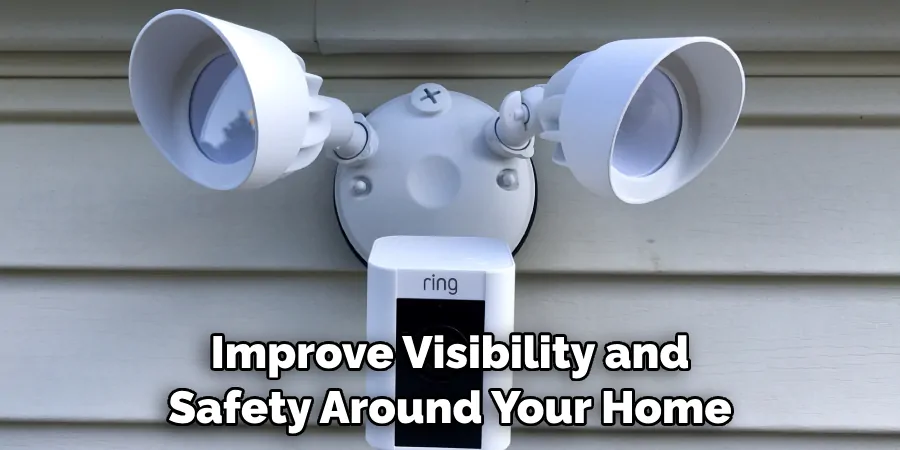
7 Tips to Follow on How to Install Floodlight without Existing Wiring
1. Select the Right Type of Wireless Floodlight
The first thing you need to do is select the right type of wireless floodlight. There are two types of wireless floodlights: battery-powered and solar-powered. Choose a floodlight that meets your needs and suits your home’s design. Solar-powered floodlights are ideal for areas with ample sunlight, while battery-powered floodlights are convenient for areas without sunlight.
2. Position the Floodlights
Choose an appropriate spot for your floodlights. Ensure that the floodlights won’t affect pedestrians’ or drivers’ vision, and make sure they are positioned in areas where you need ample lighting. Most wireless floodlights come with mounting brackets that allow you to attach them to a wall or fence.
3. Install Mounting Bracket
Once you’ve determined the location of your floodlights, install your mounting bracket. You can use screws and anchors to attach the mounting bracket to your wall or fence. Ensure that the bracket is firm and level.
4. Install Wireless Floodlight
Once you have attached the mounting bracket, it’s time to install the wireless floodlight. Position the wireless floodlight onto the mounting bracket, use screws to secure it in place, and adjust the direction of the floodlight. Some wireless floodlights have adhesive strips that allow you to stick them directly to surfaces.
5. Test the Floodlights
Before testing your floodlights, ensure that the batteries are fully charged or the solar panel can access sunlight. Once you’ve done that, test the floodlights by switching them on and off or using the motion sensor if they have one. Adjust the settings to your liking to ensure they suit your needs.
6. Conceal the Cables (if Necessary)
If you have connected your wireless floodlights to a power outlet, make sure that you conceal or hide the cables safely. You can use cable clips and ties for this purpose. Be careful not to damage any of the connections in the process.
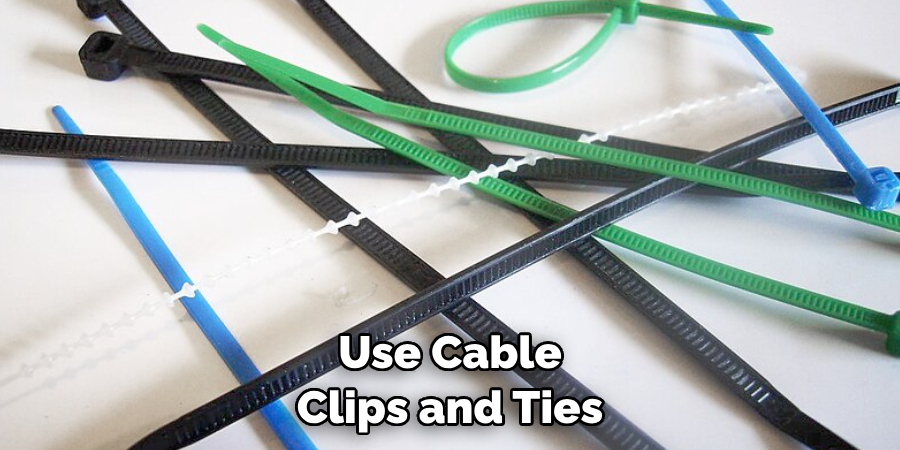
7. Enjoy Your New Wireless Floodlights!
Now that your floodlights are installed, you can enjoy the convenience and safety of wireless lighting. Wireless floodlights require minimal maintenance and can be moved easily if needed. Remember to replace the batteries or check the solar panel regularly to ensure your lights are working efficiently.
You can also add other security features, such as motion sensors or timers, to enhance your security. With wireless floodlights, you can enjoy the peace of mind that comes with knowing your home is well-lit and safe from intruders. So start installing wireless floodlights today to get the most out of them!
5 Considerations Things When You Need to Install Floodlight Without Existing Wiring
1. Location
When installing a floodlight without existing wiring, it is important to consider the location of the light. The location should be chosen based on the area that needs to be illuminated and the amount of light that is needed. It is also important to ensure that the light will not cause any glare or disturb neighboring properties.
2. Power Source
The power source is the next consideration when installing a floodlight without existing wiring. The most common power sources for floodlights are solar panels, batteries, and generators. Solar panels are an excellent choice as they require no wiring and can provide reliable power in areas with abundant sunlight.
Batteries are also a good option but may need to be replaced more often than other power sources. Generators are another option, but they can be noisy and require regular maintenance.
3. Installation Method
The installation method should also be considered when installing a floodlight without wiring. There are several different methods for mounting floodlights, such as using brackets or screws or using adhesive tape, or straps. Each method has its own advantages and disadvantages, so it is important to choose one that best suits your needs and budget.
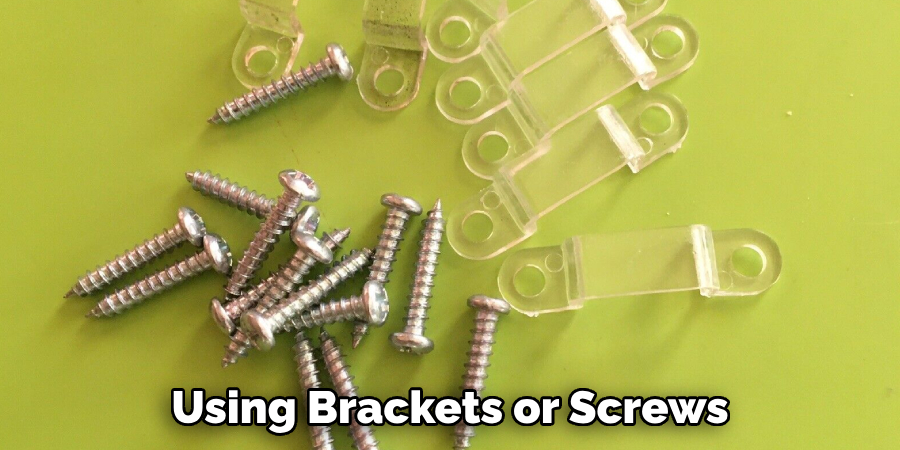
4. Lighting Type
Another factor to consider when installing a floodlight without existing wiring is the type of lighting you want to use. LED lights are becoming increasingly popular due to their energy efficiency and long lifespan, while halogen bulbs offer a brighter light but use more energy than LEDs do.
It is important to choose a lighting type that will provide enough illumination for your needs while still being energy efficient and cost-effective.
5. Safety Considerations
Finally, safety considerations should always be considered when installing a floodlight without existing wiring. These include ensuring that all connections are secure and properly insulated, using waterproofing materials where necessary, avoiding contact with live electrical wires, and taking appropriate safety precautions when working at heights or in wet conditions.
By following the abovementioned considerations, you can ensure that your floodlight installation is safe and effective without needing existing wiring. Make sure to do your research and ask any questions you may have before beginning the installation process. With proper planning and preparation, you can install a floodlight without the need for existing wiring.
5 Benefits of Install Floodlight Without Existing Wiring
1. Cost Savings
Installing a floodlight without existing wiring can save you money on installation costs. Since no wires need to be run, hiring an electrician or purchasing expensive materials is unnecessary. Additionally, most wireless floodlights are powered by batteries, so you don’t have to worry about running power lines to the location of the light. This can result in significant cost savings over traditional wired floodlights.
2. Easy Installation
Since no wiring is required for a wireless floodlight, installation is much easier than with traditional wired lights. All you need to do is mount the fixture and insert the batteries into the unit. Some models even come with a mounting bracket that makes it easy to attach the light to any surface in minutes.
3. Flexibility
Wireless floodlights offer more flexibility than wired ones since they can be moved around easily and placed in different locations depending on your needs. This makes them ideal for areas where lighting needs may change from time to time, such as outdoor patios or decks where occasional parties or gatherings occur.
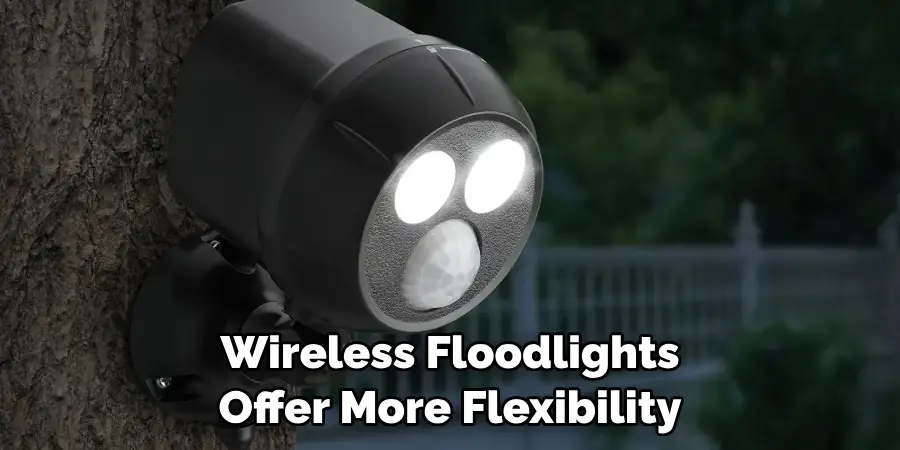
4. Improved Security
Installing a wireless floodlight can also improve security around your home or business by providing additional lighting. The motion-activated feature allows the light to turn on when it detects movement, which can help deter criminals and unwanted visitors from entering your property at night.
5. Longer Lasting Bulbs
Most wireless floodlights use LED bulbs, which last significantly longer than traditional incandescent bulbs used in wired lights. LED bulbs also consume less energy, making them more energy efficient and helping to reduce your monthly electricity bills over time.
Installing a floodlight without existing wiring can be an excellent way to save time and money while still providing adequate illumination for your property. The flexibility, energy efficiency, and improved security of wireless floodlights make them ideal for any lighting needs. Proper installation and maintenance can provide years of reliable service without wiring or expensive materials.
6 Common Mistakes People Make When Trying to Install Floodlight Without Existing Wiring
1. Not Turning Off the Power
One of the most common mistakes people make when installing a floodlight without existing wiring is not turning off the power. It’s important to turn off the power before beginning any electrical work, as it can be dangerous to work with live wires. Additionally, you risk damaging your floodlight or other electrical components if you do not turn off the power.
2. Not Using a GFCI Outlet
Another mistake people often make when installing a floodlight without existing wiring is not using a GFCI outlet. A GFCI outlet is designed to protect against electric shock and should always be used when dealing with new wiring. If you are installing a floodlight in an area that does not have a GFCI outlet, it is important to have one installed before proceeding with the installation.
3. Not Installing Proper Ground Wires
Ground wires are essential for any electrical installation and must be installed properly to function safely and correctly. If ground wires are not installed properly, they can cause shorts or other electrical problems that can damage your floodlight or other components. It’s important to check all ground wires during installation and ensure they are connected securely and correctly.
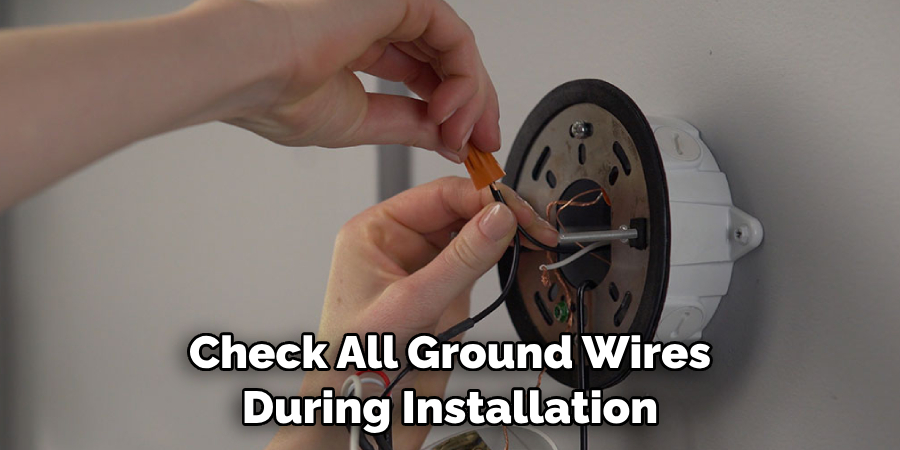
4. Not Using Proper Wire Gauge
Another common mistake people make when installing a floodlight without existing wiring is not using the proper wire gauge. Different sizes of wire require different gauges for them to carry current safely and efficiently.
If you use too thin or too thick wire, it may cause problems such as overheating or short circuits, which can damage your floodlight or other components in your home’s electrical system.
5. Not Testing Before Installation
Before installing any type of lighting fixture, it’s important to test it first to ensure that it works properly and safely before connecting it to your home’s electrical system. This will help reduce the risk of damaging your light fixture or other components due to faulty wiring or improper connections during installation.
6. Not Following Instructions Carefully
Finally, one of the most common mistakes people make when installing a floodlight without existing wiring is not following instructions carefully during installation.
Whether you’re reading an online guide or following instructions from packaging materials included with your light fixture, you must read each step carefully so that you do not miss any important details during the installation process.
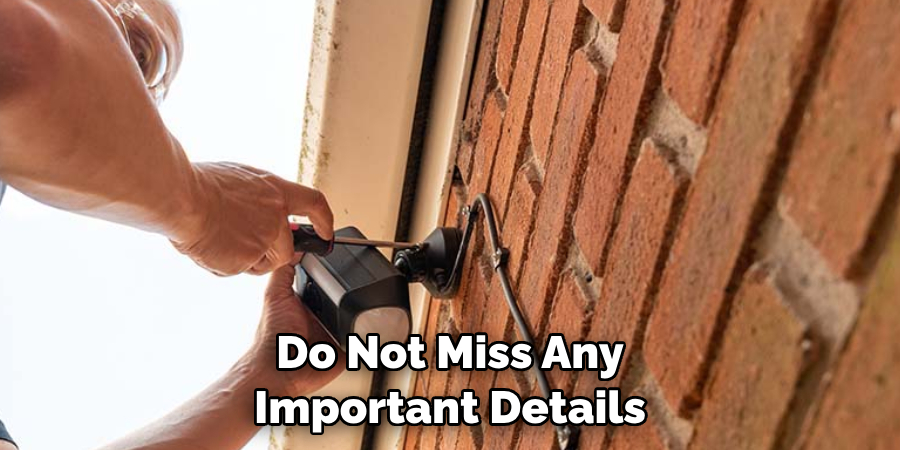
Conclusion
In conclusion, installing floodlights without existing wiring is an excellent investment for your home’s security. Ensure you choose the right type of wireless floodlight and position it in areas with ample lighting. Mount the bracket firmly onto the wall or fence and install the wireless floodlight.
Test your floodlights to ensure they work, and adjust the settings to your liking. By following these steps, you will have successfully installed floodlights without existing wiring. Thanks for reading our post about how to install floodlight without existing wiring.

